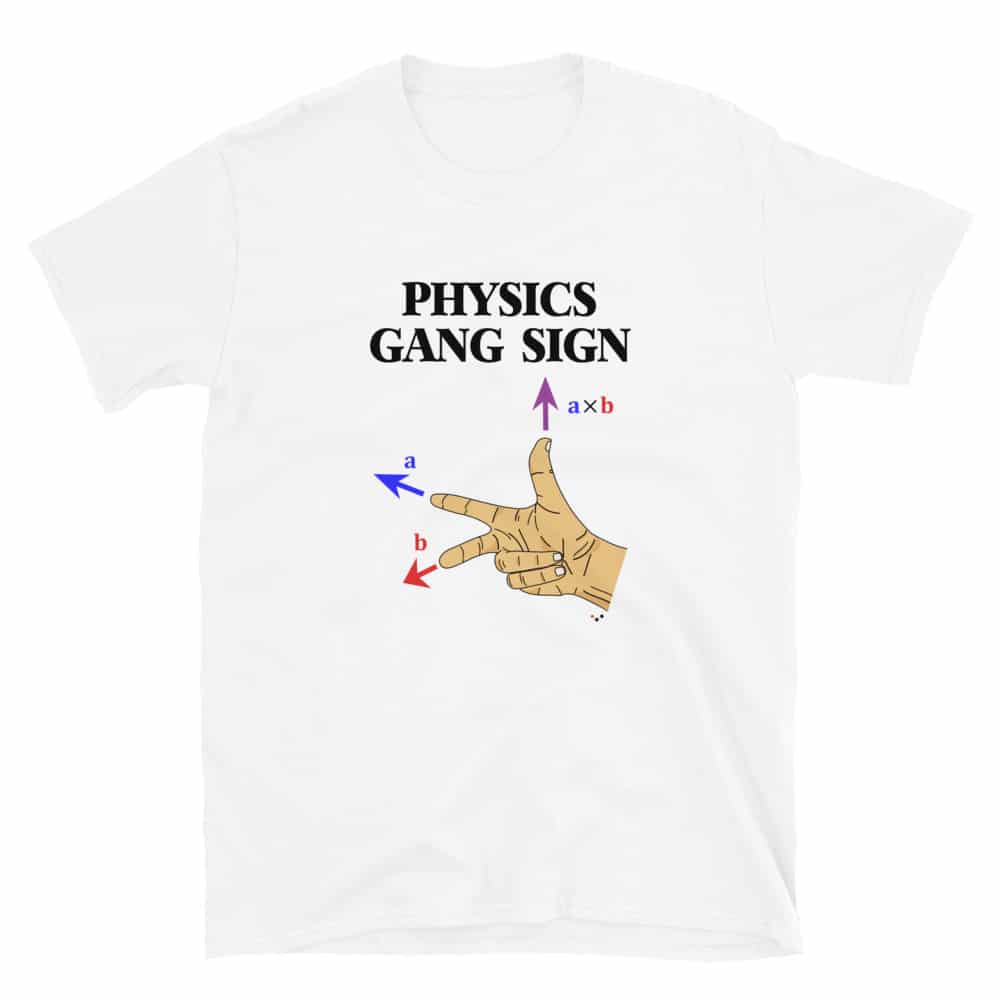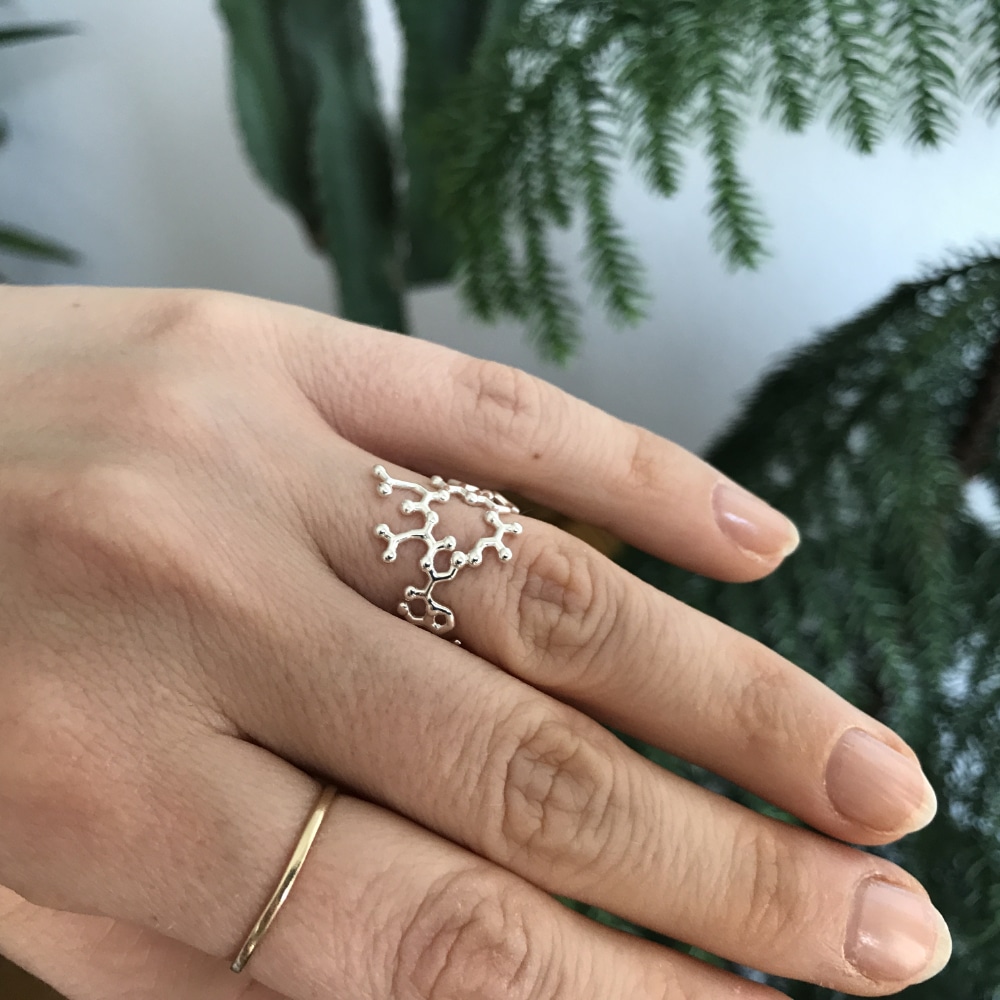Almost everything we sell is made on demand. Why is that?
Science Apparel
We use the latest Direct-to-Garment (DTG) printing technology to print molecules and science designs on your t-shirts, hoodies and tote bags. Read more about DTG here.
For our science leggings, science tote bags, swimsuits, socks, etc. we use sublimation to print the designs onto the garment which results in a beautiful, all-over print. Each pair of leggings is then hand cut and sewn in-house.
Some molecules and science designs are also embroidered onto the t-shirt with state of the art embroidering robots 😉
All the ink we use for our science apparel is Oeko-Tex™ certified, which means they are safe to print on children’s clothing and reduce environmental waste.

Chemistry Mugs
Our robots print your favorite molecules and science jokes directly onto the mug using sublimation.
Molecule Hats
Your molecule hat gets embroidered using the newest embroidering machines.
Science Posters
We print your science posters on archival, acid-free paper.
Periodic Table Towels
Our periodic table towels are all-over sublimation printed.

3D Printed Molecule Keychains
Steel molecules are available in a variety of polished and matte finishes. These puppies are 3D printed in 420 Stainless Steel infused with bronze and have a final composition of approximately 60% steel and 40% bronze. The way that bronze infiltrates into the steel can vary, and this changes the color of your product. If there is a higher concentration of Bronze near the surface of the product, it will take on more of Bronze’s deep brown color. This has the most noticeable impact on Stainless Steel but can also affect the shade of other finishes. The bronze infiltration process also requires the addition of sprues that are broken off and polished away after infusion. This can create small, round marks on the final product that appear smoother and more polished than the rest of the product.
Our molecule key chains are heat resistant to 831ºC / 1528ºF degrees. Higher temperatures may significantly change material properties.
Matte Gold and Polished Gold go through an electroplating process that deposits a 0.1 micron layer on the outside of the product. This gives them a unique finish and is great for aesthetic purposes, but will wear off on functional products that are exposed to friction.
Please note: Our steel is not completely corrosion-resistant and may tarnish.
3D Printed Plastic Molecules
To 3D print molecules in this material, we start with a bed of Nylon powder and sinter the powder with a laser layer by layer, solidifying the powder as we go. All colors besides white and black are polished and then dyed using a manual process. Due to the inherent variability of this process, color may vary slightly between products.
The metallic plastic molecules are made using the same process but starting with a bed of mixed nylon plastic and aluminum powder.
3D Printed Science Jewelry
Our 3D molecule & science jewelry is only possible through a 3-7 step process and the help of 3D printing. This is why your molecule takes about 9 business days to get manufactured. But we assure you, the wait is well worth it!
Plated Science Jewelry
First, your molecule or science design is 3D printed in wax, then put in a container where liquid plaster is poured around it. Once the plaster sets, the wax is melted out in a furnace and the remaining plaster becomes our mold. Now molten brass is poured into our mold and set to harden. Then plaster is broken away, revealing your molecule, which now gets cleaned and hand polished carefully. Your molecule now goes through two plating steps – first a layer of a tin-rhodium alloy is applied for strength and durability. Then gold/rhodium plating provides the finishing touch. Voilà!
Silver Molecule Jewelry
The 3D printed wax molecule or science design is put in a container and liquid plaster is poured around it to create a mold. After the plaster sets, the wax is melted out and molten silver is poured into the plaster mold. The plaster is then pulled away to reveal the silver and the finished product is polished for a smooth surface.
Solid Gold Molecule Jewelry
First, the molecule or science design is printed in wax using a specialized high-resolution 3D printer. It is then put in a container where liquid plaster is poured in around it. When the plaster sets, the wax is melted out in a furnace, and the remaining plaster becomes the mold.
Molten Gold is now poured into this mold and set to harden. The plaster is broken away, revealing your new molecule. The molecule is then carefully cleaned and hand-polished to give it the trademark Gold luster.
Check out our serotonin and dopamine molecule ring to see our gold and silver science jewelry in action.
Read more about casting here.

